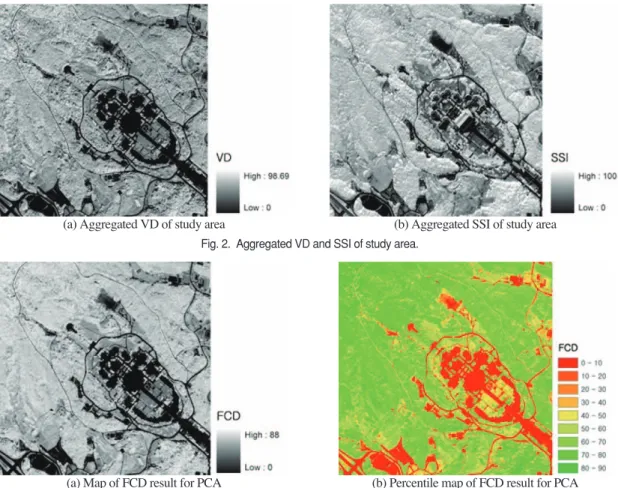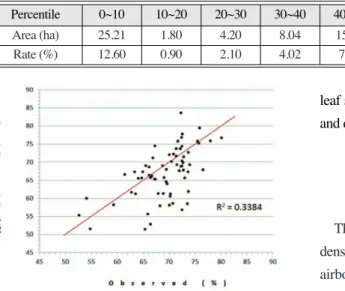1. Introduction
Forest biomass is a quantity of the vegetation mass per unit area and is basic characteristic related to productivity and ecosystem processes of forest (Bonner, 1985). Forest biomass is getting important issue to climate change as forest becomes a key factor which reduces carbon dioxide of atmosphere as a
carbon sink. Forest biomass is an important indicator of carbon stocks that will help determine the contribution of forest to global carbon cycle (Kurz and Apps, 1999). Monitoring of biomass changes in forest regarded important part of monitoring carbon dioxide cycle in forest. Therefore, needs of methodologies and studies for precise estimation of forest biomass is on the rise (Shen et al., 2008).
Forest Canopy Density Estimation Using Airborne Hyperspectral Data
Tae-Hyub Kwon*, Woo-Kyun Lee**
†, Doo-Ahn Kwak**, Taejin Park**, Jong Yoel Lee**, Suk Young Hong*, Cui Guishan** and So Ra Kim**
*National Academy of Agricultural Science, Rural Development Administration
**Department of Environmental Science and Ecological Engineering, Korea University
Abstract : This study was performed to estimate forest canopy density (FCD) using airborne hyperspectral data acquired in the Independence Hall of Korea in central Korea. The airborne hyperspectral data were obtained with 36 narrow spectrum ranges of visible (Red, Green, and Blue) and near infrared spectrum (NIR) scope. The FCD mapping model developed by the International Tropical Timber Organization (ITTO) uses vegetation index (VI), bare soil index (BI), shadow index (SI), and temperature index (TI) for estimating FCD. Vegetation density (VD) was calculated through the integration of VI and BI, and scaled shadow index (SSI) was extracted from SI after the detection of black soil by TI. Finally, the FCD was estimated with VD and SSI. For the estimation of FCD in this study, VI and SI were extracted from hyperspectral data. But BI and TI were not available from hyperspectral data. Hyperspectral data makes the numerous combination of each band for calculating VI and SI. Therefore, the principal component analysis (PCA) was performed to find which band combinations are explanatory. This study showed that forest canopy density can be efficiently estimated with the help of airborne hyperspectral data. Our result showed that most forest area had 60 ~ 80% canopy density. On the other hand, there was little area of 10 ~ 20%
canopy density forest.
Key Words : Airborne hyperspectral data, Forest canopy density, Remote sensing, Forest inventory, Principal Component Analysis
Received May 9, 2012; Revised June 9, 2012; Accepted June 10, 2012.
†

